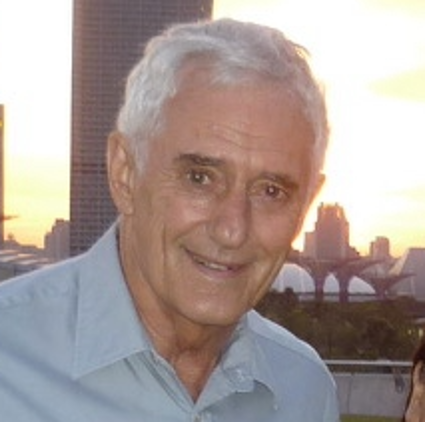Professor Gavin Jones’ contribution to ANU Indonesian studies
When Gavin Jones died in Perth on August 27, 2022, we lost one of the pioneers of Indonesian studies at the ANU. He helped to shape a culture of collaboration and inclusiveness that is a prime characteristic among Indonesianists in the University.
Born in Armidale, NSW in 1940, Gavin built on his focussed approach to training as a star athlete to achieve success in his academic studies first at the University of New England and later at the Australian National University. He enrolled for a PhD in Demography under the supervision of Professor W.D. “Mick” Borrie and Professorial Fellow Norma McArthur. He came of age when demography was focused on international panic over explosive population growth and Australians were increasingly orienting their interests away from England and toward their close Asian neighbours. In the 1960s the ANU Institute of Advanced Studies was emerging as a powerful centre for Asia-Pacific studies, attracting preeminent scholars and bright students, all of whom were well supported to undertake language studies and lengthy fieldwork. This fostered a cosmopolitan culture in Canberra. As part of a small group of graduate students, including a high proportion of international scholars, Gavin enjoyed strong support to head overseas. He went to Malaysia where he carefully analysed the demographics of the labour force.
Having achieved a smattering of Malay language and substantial skills in demographic methods Gavin was recruited by the New York based Population Council. He always reflected positively on the time he and his growing family lived in New York. At the Council it was natural for them to be sent to consult, first to Bangkok and then to Jakarta where he laid the foundations of his expertise in family demography in Southeast Asia. In 1972-75 he collaborated with recent ANU demography graduate Peter McDonald to assist the Demographic Institute of the University of Indonesia to carry out the first survey of fertility and mortality with a national scope in Indonesia. They developed a high profile among the foreign donor community, all of whom were hungry for data to assist in the planning of health and development projects. The positions Gavin and Peter forged with the Demographic Institute became a template for later links between the ANU and an array of Indonesian universities. In contrast with many consultants and contract workers Gavin and Peter were encouraged by Professor Jack Caldwell to maintain the ANU as their disciplinary home. They appreciated this respect for their professional standing where others of their colleagues sank into bureaucratic doldrums.
When the Demography master’s degree was established in ANU, Jones and McDonald attracted a generation of Indonesian university and government employees for higher degree coursework. From these trainees a select group went on to doctoral projects. Gavin was an outstanding supervisor for these students, not least because of his understanding of Indonesian language and appreciation of their institutional environment. At around the same time the masters teaching program was managed by Peter, Gavin was the Director of the Development Studies Centre and helped establish strong links on campus between demographers, economists and anthropologists interested in Indonesia. He also later served as Head of the Demography Program.
In 1978 the ANU was asked by international donors to provide more assistance in population research training. The International Population Dynamics Program was designed by Gavin, Peter, Jack Caldwell, Valerie Hull and me, based on our years of experience working in the two premier universities of Indonesia. The IPDP carried out projects across Indonesia, and later with China, Vietnam, Cambodia, and the Philippines. Gavin led the way in setting out clear pathways across the region and introducing the ANU to bureaucrats and academics. He did this with his characteristic good humour, and high standards of professionalism. IPDP staff helped establish population and health programs across over a dozen Indonesian universities. It also worked over a decade with the Indonesian Institute of Science (LIPI) carrying out a score of research projects in Eastern Indonesia and training many LIPI staff to PhD level.
Over the years funding for IPDP came from a variety of donors, including UNFPA and AUSAID, but the template remained steady. Staff were hired by the ANU and seconded to local universities or government offices. Gavin was active in IPDP, recruiting and supervising students, publishing research notes, managing and advising research fellows. Out of this activity arose the joint publication “Demographic Dimensions of Indonesian Development” (Hugo, Hull, Hull and Jones, 1987) that remains one of the most comprehensive treatments of Indonesian demography.
Across his ANU career Gavin was a member of the Indonesia Study Group and helped to organize Indonesia Updates and advise the leaders of the Indonesia Project. Even after he left Canberra to work in Singapore and Perth, he retained his links to the ANU as a Visitor and Emeritus Professor in the School of Demography. Days before he passed, I talked with him about plans for a visit east to possibly attend the 2022 Indonesia Update. I reminded him we have his name on a door. Alas, that was an ambition that would not come to be.
Terence H. Hull
18 September 2022

